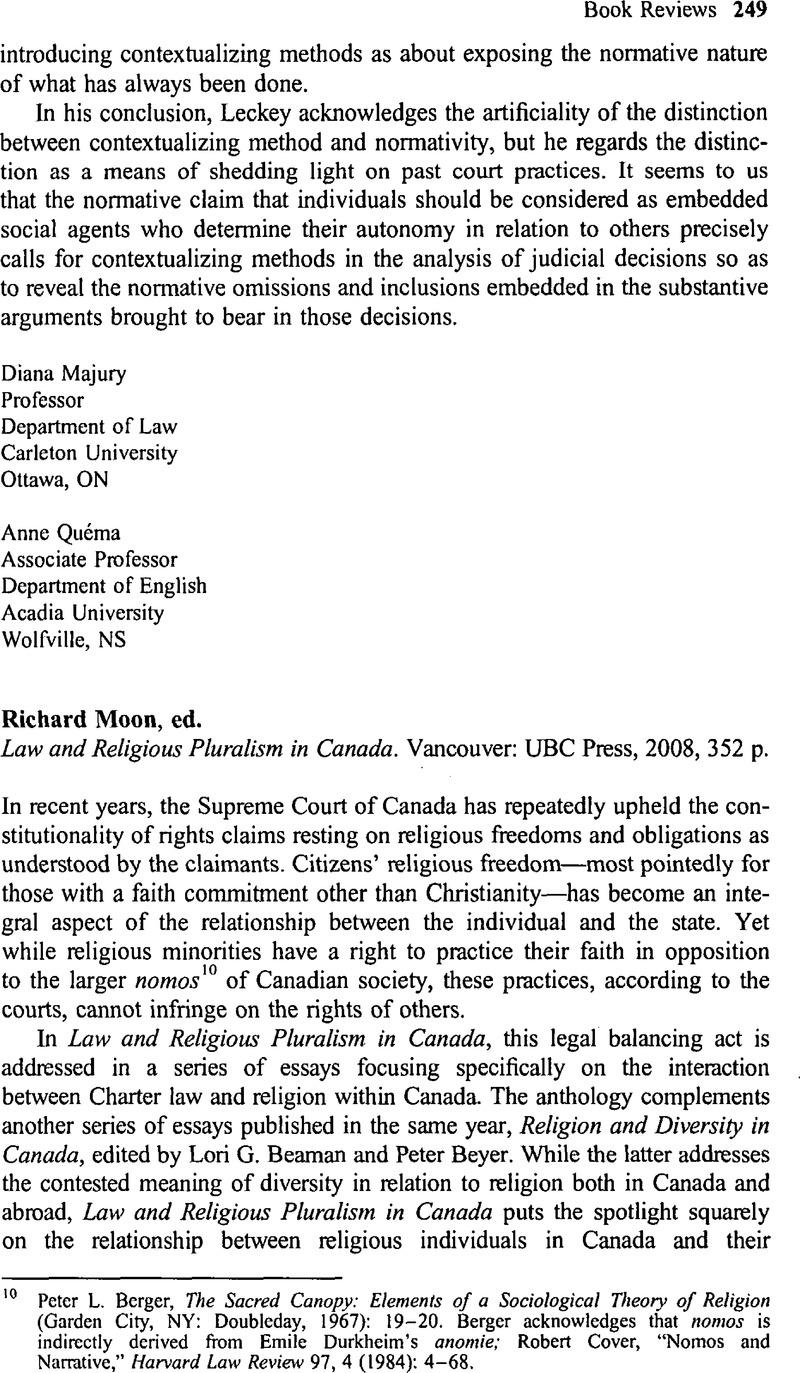Article contents
Richard Moon, ed. Law and Religious Pluralism in Canada. Vancouver: UBC Press, 2008, 352 p.
Published online by Cambridge University Press: 18 July 2014
Abstract

- Type
- Book Reviews/Comptes-Rendus
- Information
- Canadian Journal of Law and Society / La Revue Canadienne Droit et Société , Volume 25 , Issue 2 , August 2010 , pp. 249 - 251
- Copyright
- Copyright © Canadian Law and Society Association 2010
References
10 Berger, Peter L., The Sacred Canopy: Elements of a Sociological Theory of Religion (Garden City, NY: Doubleday, 1967): 19–20Google Scholar. Berger acknowledges that nomos is indirectly derived from Emile Durkheim's anomie; Cover, Robert, “Nomos and Narrative,” Harvard Law Review 97, 4 (1984): 4–68Google Scholar.
11 Lisa Niemetscheck, “Calamity or Celebration? Value-Based Alternative Method of Understanding Human Rights' Interaction with Cultures” (April 2006), paper on file with Jennifer Nedelsky.
12 Chief Justice Brian Dickson, Speech, Manitoba Law Journal 20 (1991): 557–61Google Scholar. In his speech, Dickson C.J. remarked that not only had the Charter changed the way the judiciary viewed cases, it had also changed the way society viewed itself, as an evolving whole, a living tree.
- 1
- Cited by


